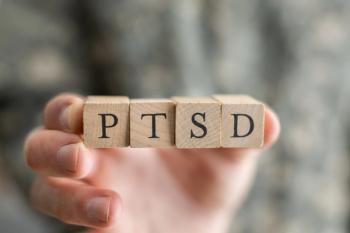
- Vol 34 No 5
- Volume 34
- Issue 5
The NIMH Research Domain Criteria (RDoC): New Concepts for Mental Disorders
The Research Domain Criteria (RDoC) program: how it evolved, clinical applications, and goals.
As a clinical psychology student during the 1970s, my training included the delivery of imaginary exposure therapies for fear (in the era before DSM-III when “phobic neurosis” was the only relevant diagnosis and functional behavioral assessments were the norm for behavioral therapies). For most patients, these treatments worked as promised, delivering positive outcomes after a systematic course of treatment.
However, on occasion the same therapeutic procedures failed. I particularly remember one young man whose fear reports seemed similar to those of other patients and who progressed through the “fear hierarchy” at a regular pace. In spite of this apparent progress, he reported that his anxiety levels in actual situations did not change and that the treatment was not working; he left therapy soon after. As for most clinicians who have experienced this unsuccessful outcome, it was difficult to say why. We simply had to accept that sometimes treatment does not work for unknown reasons-an unsatisfactory situation for too many clinicians and patients no matter what the disorder.
This situation is, of course, not confined to psychosocial treatments. Several pharmaceutical industry scientists recently noted:
On average, a marketed psychiatric drug is efficacious in approximately half of the patients who take it. One reason for this low response rate is the artificial grouping of heterogeneous syndromes with different pathophysiological mechanisms into one disorder.1
Rethinking DSM
Heterogeneity poses great difficulty in specifying target engagement and relating target engagement to outcomes, which contributes to the inconsistent results in clinical trials so often noted for psychiatric drugs. These factors have played a major role in the small number of new compounds approved for market in recent years and the withdrawal of pharmaceutical companies from development programs for mental disorders in spite of the great need for innovative treatments.
Related content:
DSM-5 and the NIMH Research Domain Criteria Project
Overall, the burden of mental disorders has shown virtually no change over recent decades, and significant problems such as suicide have, if anything, shown an upward trend (although, admittedly, the modest effectiveness of treatments is one aspect of a complex phenomenon that includes sociocultural, economic, and varied environmental factors).2
The
As the Institute invited input for the 2008 revision of its Strategic Plan, then-Director
At the core: psychiatric research
Diagnostic manuals for mental disorders have generally served adequately for clinical practice, given contemporary diagnostic practices and treatments. However, it became increasingly clear that the situation was different for research. Results of studies using neuroimaging, behavioral science, and genetics were inconsistent; while differences between group averages for a clinical group and healthy controls could often be demonstrated, similar patterns were frequently observed for multiple disorders. Crucially, data that could inform the treatment of individuals were rare––a situation attributable to problems of heterogeneity, extensive comorbidity, and over-specification of categories.
It was apparent that the hegemony of the diagnostic system played a significant role in stifling the innovation needed to incorporate cutting-edge science from multiple areas into clinical research. Among other problems, there was a need to apply the methods used in other areas of medicine where traditional symptom-based diagnoses of disorders were gradually supplanted by an understanding of the mechanistic etiology of disorders considered in terms of deviations from normal functioning of various processes in the organism.
The RDoC program
The goal of the 2008 Strategic Plan contained was to develop a framework for clinical research that was “based upon dimensions of observable behavior and neurobiological measures.”4 This goal was grounded on the emerging notion that pathophysiological aspects of mental disorders could better be considered as malfunctions in neural circuits or systems rather than as neurotransmitter imbalances. This approach had the added advantage that decades of basic science have explicated the relationship between major behavioral/cognitive functions and their implementing neural circuits or systems: for example, the amygdala and its efferents for fear and the ventral striatum for approach and reward.
The NIMH workgroup that was convened to implement this project specified 5 major domains of function (viz, negative valence, ie, systems that respond to threat or aversion; reward/incentive systems, termed positive valence; cognitive processes; social processes; and arousal/modulatory systems). While details of this process and the overall framework have been summarized extensively elsewhere, it is important to note that 2 major elements of this framework involved developmental trajectories and environmental influences, and that a
The Research Domain Criteria (RDoC) program has grown steadily and attracted considerable attention since the first grants were funded in 2012. A March 2017 search of the NIH RePORTER engine returned over 300 hits for funded research grants with “RDoC” as a search term, almost all in the clinical/translational area. While exact data are not available, only about 10% of these grants have been awarded through funding set-asides, and the vast majority were initiated by researchers.
A Google Scholar search for the same time frame returned over 5000 scientific articles that cite RDoC-many of them in-depth considerations of various aspects of the framework. Finally, RDoC has attracted considerable international interest as a research framework (eg, the European ROAMER [Roadmap for Mental Health Research] project for planning future mental health needs in the European Union). In spite of this progress, RDoC has also received its share of criticism over the past few years, to the point where discussions of the “controversy” about RDoC have emerged.7
On the one hand, as a framework that has been designed to encourage research that advances new empirical data and methodological approaches, critical consideration of RDoC has been quite constructive. On the other, it is apparent that a substantial part of the negative comments are consequences of the difficulty involved in communicating a complex new approach.
It may be helpful to list briefly a few of the major misapprehensions about the project. First, there has been a misperception that NIMH no longer funds clinical research focused on DSM disorders. This may stem from a 2013 blog post in which Dr. Insel mentioned that NIMH would
Second, the introduction of biological measures into the framework has led some readers to conclude that NIMH now exclusively focuses on physiological approaches to mental illness, at the expense of psychological and/or phenomenological aspects. However, RDoC articles have consistently emphasized that the framework is intended to synthesize self-report, behavioral, and biological measures to seek an integrative understanding of behavioral and cognitive/emotional processes rather than to embrace an eliminative reductionism.5,6
Another misunderstanding seems to be that RDoC is intended as a new and alternative clinical nosology to displace the DSM/ICD system. In response, the NIMH has tried to clarify that RDoC is intended to foster research toward a new system-to create a literature that informs future revisions to the diagnostic manuals-rather than to comprise a new system in and of itself. In a related vein, a number of readers have objected that RDoC is not yet ready for practical use in clinical settings. This point is true: RDoC is not intended for actual clinical use at the current time. Current diagnostic approaches offer substantial clinical utility given our present understanding of mental disorders and available treatments, and new approaches will need to evolve gradually beyond the contemporary system rather than replace it wholesale.
That said, a number of clinicians and clinical researchers have written positively about the promise of RDoC in a clinical setting, for the same reasons of diagnostic difficulties and modest treatment efficacy that prompted the research community’s
An example of RDoC results
The concern about practical clinical work brings this essay full circle to the issues with anxiety disorder treatments mentioned at the outset. Lang and colleagues12 examined the psychophysiological responses of patients with anxiety disorders using multiple assessments that included physiological measures (eg, fear-potentiated startle, heart rate) as well as self-reports of emotion. After many studies that compared the responses of patients with various disorders, the investigators adopted an RDoC approach of grouping patients along a dimension of physiological reactivity independent of primary diagnosis.
Perhaps counterintuitively, the data showed that an increasing extent of blunted physiological responding during fear evocation was associated with more severe anxiety symptoms and greater impairment in functioning. In contrast, patients with higher physiological reactivity reported less severe symptomatic problems and lesser impairment in functioning. The dimension of high-to-low reactivity was not strongly related to primary diagnosis.13
These results suggest possible reasons for varied outcomes in patients with similar diagnoses and identical treatment. Of course, the data raise many more questions, such as what accounts for these differences in reactivity, why they are so systematically related to impairment, and whether attention to developmental trajectories could lead to advances in prevention.14 However, the results also suggest new approaches to formulate more tailored assessments that could lead to better matching of patients to treatments and to the development of new therapies that address individual differences.
Conclusion
Seen from this perspective, clinical applications of RDoC might well be surprisingly proximal rather than deferred to a far-off future for new diagnostic and treatment approaches-a view that applies to all therapeutic modalities. For instance, the opportunities of aligning specific functional aspects with neural systems have prompted conversations with industry scientists and regulatory agencies about the potential for new approaches to
. . . we need more services. This is true. However, where they do exist, and where people are receiving treatment and resources, and where we do in fact help people, it honestly still feels like we are shooting water guns into a forest fire. . . . Without scientific breakthroughs we are destined to lose.15
The hope of the NIMH is not only that RDoC may help catalyze the research advances that will aid our patients in the distant future, but even more that research that incorporates the concepts of the RDoC approach will vastly shorten the time needed for future hopes to become reality.
Disclosures:
Dr. Cuthbert is Director of the Research Domain Criteria Unit, National Institute of Mental Health, Bethesda, MD.
The author reports no financial conflicts of interest.
References:
1. Wong EHF, Yocca F, Smith MA, Lee C-M. Challenges and opportunities for drug discovery in psychiatric drug disorders: the drug hunters’ perspective. Int J Neuropsychopharm. 2010;13:1269-1284.
2. Whiteford HA, Degenhardt L, Rehm J, et al. Global burden of disease attributable to mental and substance use disorders: findings from the Global Burden of Disease Study 2010. Lancet. 2013;382:1575-1586.
3. National Institute of Mental Health. NIMH Mission.
4. National Institute of Mental Health. Research Domain Criteria (RdoC); 2017.
5. Kozak MJ, Cuthbert BN. The NIMH Research Domain Criteria Initiative: background, issues, and pragmatics. Psychophysiology. 2016;53:286-297.
6. Cuthbert BN. Toward the future of psychiatric diagnosis: the seven pillars of RDoC. BMC Medicine. 2013;11:127.
7. Carpenter WC. The RDoC controversy: alternate paradigm or dominant paradigm? Am J Psychiatry. 2016;173:562-563.
8. Insel TR. Transforming diagnosis. 2013.
9. Yager J, Feinstein RE. Potential applications of the National Institute of Mental Health’s Research Domain Criteria (RDoC) to clinical psychiatric practice: how RDoC might be used in assessment, diagnostic processes, case formulation, treatment planning, and clinical notes. J Clin Psychiatry. 2016.
10. Sharp C, Fowler JC, Salas R, et al. Operationalizing NIMH Research Domain Criteria (RDoC) in naturalistic clinical settings. Bull Menninger Clin. 2016;80:187-212.
11. Preskorn SH. CNS drug development: lessons learned, part 2: symptoms, not syndromes as targets consistent with the NIMH Research Domain approach. J Psychiatr Pract. 2015;21:60-66.
12. McTeague LM, Lang PJ. The anxiety spectrum and the reflex physiology of defense: from circumscribed fear to broad distress. Depress Anxiety. 2012;29:264-281.
13. Lang PJ, McTeague LM, Bradley MM. RDoC, DSM, and the reflex physiology of fear: a biodimensional analysis of the anxiety disorders spectrum. Psychophysiology. 2016;53:336-347.
14. Zalta AK, Shankman SA. Conducting psychopathology prevention research in the RDoC era. Clin Psychol. 2016;23:94-104.
15. Guglielmo SS. On the mental health crisis and the RDoC. Huffington Post. August 2016.
Articles in this issue
over 8 years ago
Introduction: More Dives and Intellectual Jujitsuover 8 years ago
Are We Overdiagnosing and Overtreating ADHD?over 8 years ago
Solaceover 8 years ago
The Quiz: Low Back Painover 8 years ago
Medically and Psychiatrically Complicated Patientsover 8 years ago
Challenging ConsultationsNewsletter
Receive trusted psychiatric news, expert analysis, and clinical insights — subscribe today to support your practice and your patients.














